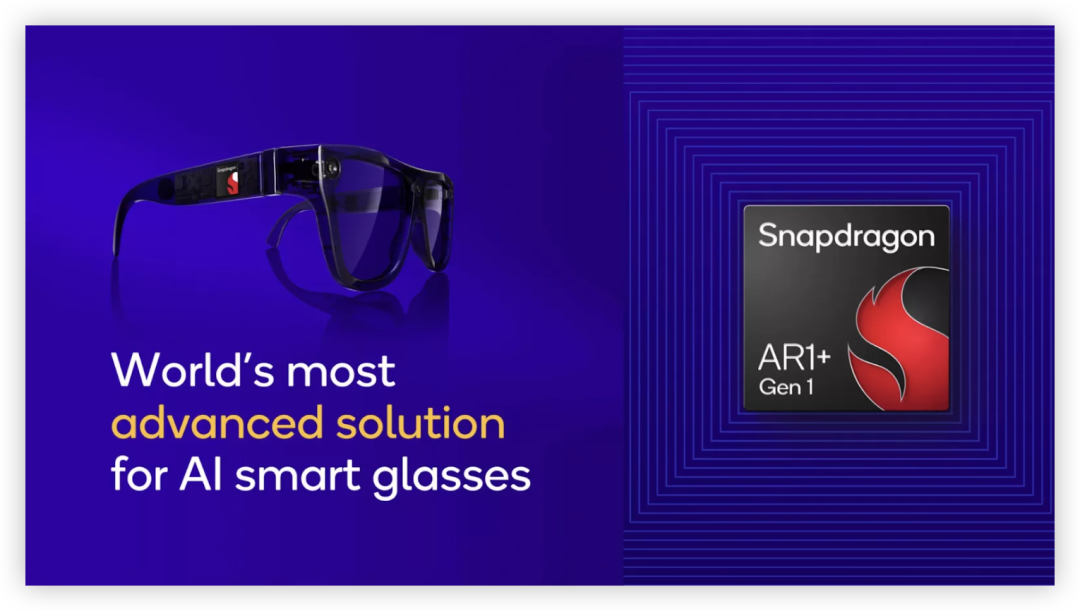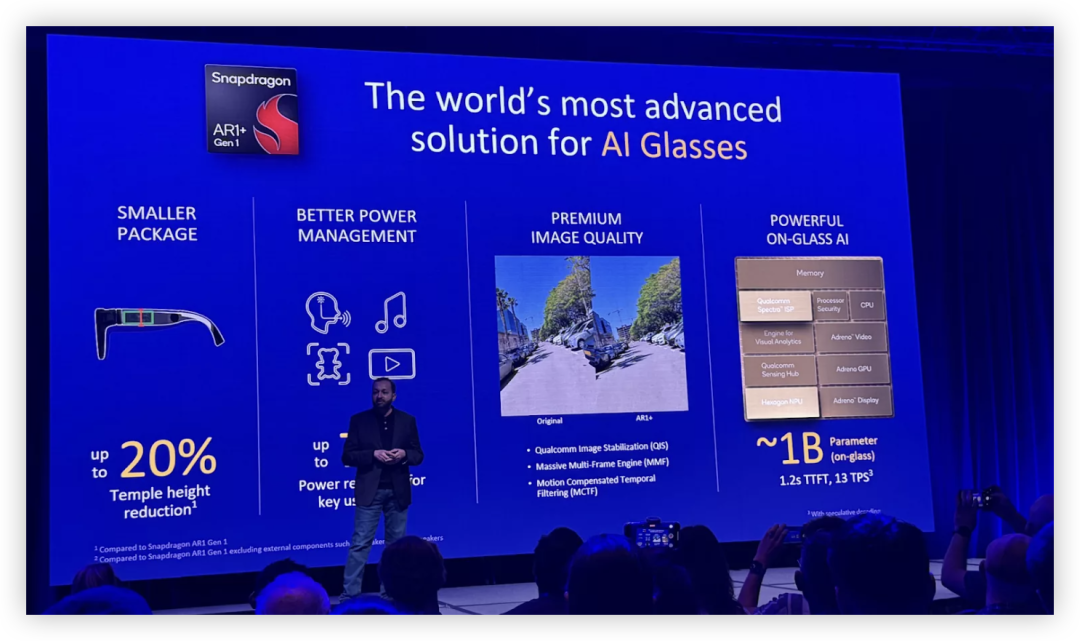The Future of Wearable AI: What Changes Will Qualcomm's New Snapdragon AR1+ Gen 1 Bring to AI Glasses?

As artificial intelligence gradually permeates daily life, we've moved from 'phone + AI' combinations to deep integration of 'glasses + AI'. Microsoft Surface and Meta Ray-Ban Meta have tried to integrate AI into people's behavioral scenarios through small screens and mobile devices. This time, at AWE USA 2025, Qualcomm released the new "Snapdragon AR1+ Gen 1", making us wonder: Has the true "brain" of AI glasses started to walk independently?
Glasses: More Than Just a Tool to See the World
Don't forget, glasses have an irreplaceable position in human civilization. You might think AI glasses just push your apps onto your lenses and head? The ambition behind it goes far beyond that. The debut of Snapdragon AR1+ Gen 1 makes people imagine a possibility: in the future, we'll use a "lens" instead of a smartphone.
This Isn't Just a Simple Hardware Upgrade
The maturity of AI glasses is inseparable from their "chip intelligence." The newly launched AR1+ Gen 1 chip, whether in size or efficiency, reveals an understanding of "ultimate portability and lightweight experience." With a 1-billion parameter language model, 13 tokens/second real-time processing capability, and "AI neurons" starting to connect to the five senses, it means AI computing has finally moved towards truly "wearable" stage.

How One Chip Can Move Market Tides
AR1+ Gen 1: The "AI Brain" of the Glasses World
Looking at the numbers, the AR1+ Gen 1 chip's volume has been reduced by 26% compared to the previous generation, while battery life has improved by 7%. How to understand this breakthrough in capability? It's like gently placing an intelligent thought in the optical brain, not knowing it will plant revolutionary seeds in daily small matters.
Compared to previous generations, AR1+ Gen 1 isn't just a computing power upgrade, but the ultimate "edge AI" solution - compressing the weight of small language models into the chip itself, with obvious benefits for privacy protection and real-time response. Now AI can recognize street signs, interpret meeting room screens, and even identify text in dim light - imagine how it becomes a "seer"?
Who Will Wear It Becomes the Key Question
Although it's not yet clear which manufacturer will be the first to adopt AR1+ Gen 1, whether it's an upgraded Vision Pro or emerging AR glasses brands. For example: Meta Ray-Ban's attempts have revealed a trend where "high-value chips" can be paired with "high-end consumption," and the introduction of AR1+ Gen 1 may trigger a new wave of consumer frenzy.
Future Disruptive Directions
How will these breakthroughs redefine our lives? Take a simple example - you're walking on a street corner, and your glasses automatically analyze the complex surrounding scene and provide specific operational suggestions. This scenario of "abstract prompts becoming guiding maxims" may be coming soon with the popularization of AR1+ Gen 1.
From a broader perspective, after artificial intelligence added fuel to the initial explosion of wearables, more refined, more private, and more naturally integrated "edge AI" will become the core of competition. Now, Snapdragon AR1+ Gen 1 tells the market with its capabilities: it's not chasing "superficial" experiences, but moving towards "internal excellence and external coolness" deep intelligence.
Are We Really Ready?
Some might ask, isn't this still not a product that everyone can experience? That's right - technology always goes through a process from luxury to daily use. But the arrival of AR1+ Gen 1 has already planted the seed for the question "When did you learn to use your first AI glasses?" It might be the "iPhone moment" for the glasses industry, and also a turning point for us to re-understand "hardware + AI."
The future has arrived, it's just hidden behind the lenses. Are you ready to welcome this era?
分享文章
3篇相关文章
AR Payment Card 'XRCard' Debuts! The Future of Voice-Operated Smart Glasses!
2025-06-09
In recent years, AR technology has developed rapidly and gradually integrated into our daily lives. Under this trend, Canadian company Flybits has launched a new payment card called 'XRCard', attracting widespread attention. This card can be operated through voice commands using smart glasses, potentially revolutionizing how we conduct banking transactions.
AR Glasses Battle Begins: Can Tech Giants End the 'Dust Collector' Fate?
2025-06-03
Last week on the subway, I witnessed a business professional pointing at thin air - don't worry, he was wearing the latest AR glasses handling emails. This moment made me realize that the Jarvis-style interaction from 'Iron Man' is entering our daily lives at a 45% annual market growth rate. But from geek toy to mass consumer product, how many hurdles must AR glasses overcome?
Meta Teams Up with Oakley: Are Smart Sports Glasses Coming?
2025-06-17
Hey tech enthusiasts and sports lovers, has the tech world been a bit restless lately? That's right, Meta is about to make some big news! They're not just playing with the metaverse anymore - they're directly targeting our eyes - Meta has officially announced a partnership with the sports veteran Oakley to launch smart sports glasses!